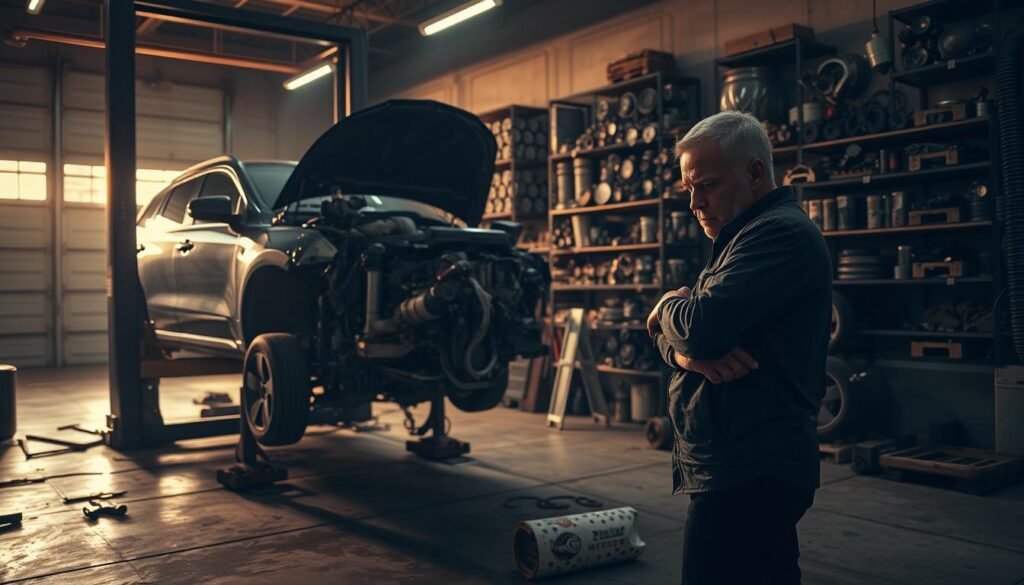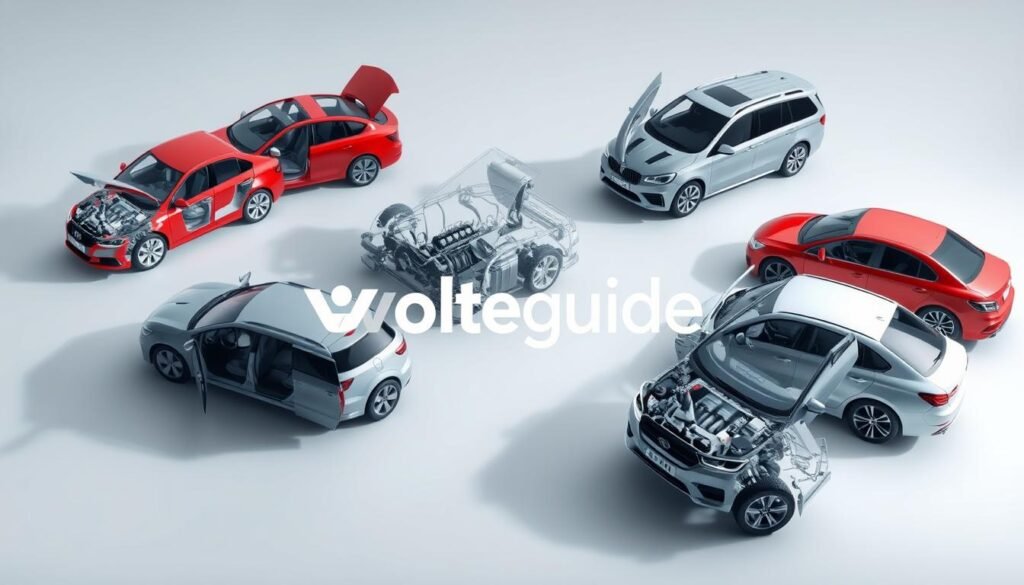1 Million+ Consumers Cautioned About Pricey Vehicle Repair Costs

A recent warning has been issued to over 1 million consumers regarding the potentially exorbitant costs associated with vehicle repairs. The alert highlights the growing issue of expensive auto repairs and the need for vehicle owners to be aware of the potential financial implications.
The rising costs of vehicle repair are a concern for many drivers, with the average cost of repairs increasing significantly over the years. As a result, it is essential for vehicle owners to take proactive steps to maintain their vehicles and avoid costly repairs.
Key Takeaways
- Over 1 million consumers have been warned about the potential costs of vehicle repairs.
- The average cost of vehicle repairs has increased significantly in recent years.
- Regular vehicle maintenance can help mitigate the risk of costly repairs.
- Vehicle owners should be aware of the potential financial implications of repairs.
- Proactive steps can be taken to reduce the likelihood of expensive repairs.
More Than1 Million People Warned of ‘Costly’ Vehicle Repairs
A significant number of vehicle owners, exceeding 1 million, have been cautioned about costly repairs. This warning involves various agencies, including consumer protection organizations and government bodies, highlighting the widespread nature of the issue.
The Scale of the Warning
The scale of the warning is substantial, with over 1 million individuals affected. The demographics of those affected include a wide range of vehicle owners.
Demographics of Affected Vehicle Owners
The affected vehicle owners span various age groups and income levels, indicating a broad impact across different demographics.
Timing and Distribution of Warnings
Warnings have been distributed over several months, with a significant spike in notifications during the last quarter, suggesting a coordinated effort among the involved agencies.
Agencies Involved in Issuing the Warning
Several agencies have joined forces to issue the warning, including prominent consumer protection organizations and government oversight bodies.
Consumer Protection Organizations’ Role
Organizations such as the Consumer Protection Agency have played a crucial role in identifying and alerting vehicle owners to potential costly repairs.
Government Oversight Participation
Government bodies, including the Department of Transportation, have participated in the warning effort, providing regulatory oversight and support.
The combined effort aims to inform and protect vehicle owners from unexpected repair costs, emphasizing the importance of awareness and preventive measures.
Understanding the Current Vehicle Repair Crisis
A recent surge in vehicle repair costs has prompted warnings to over a million consumers about potentially expensive fixes. The issue is multifaceted, involving rising costs and a varied geographic impact.
Rising Repair Costs: By the Numbers
The financial burden of vehicle repairs is growing. Recent data indicates a significant increase in repair costs over the past few years.
Year-Over-Year Cost Increases
Year-over-year, vehicle repair costs have seen a substantial rise. The average cost increase is now around 5-7% annually, largely due to the complexity of modern vehicles.
Comparison to Historical Repair Costs
Compared to historical data, current repair costs are significantly higher. The integration of advanced technology in vehicles has driven this increase.
Geographic Distribution of Affected Consumers
The impact of rising repair costs isn’t uniform across the country. Different regions are experiencing varying levels of cost increases.
Urban vs. Rural Impact Differences
Urban areas tend to have higher repair costs due to the concentration of luxury vehicles and advanced automotive technology. In contrast, rural areas often face higher costs due to longer travel distances for repairs.
State-by-State Analysis
A state-by-state analysis reveals that certain regions, such as California and New York, are experiencing higher-than-average repair costs. This is largely attributed to the high concentration of luxury vehicles in these areas.
Primary Factors Driving Expensive Vehicle Repairs
Several primary factors are contributing to the surge in vehicle repair expenses. The increasing complexity of modern vehicles, disruptions in supply chains, and labor shortages in the automotive repair industry are among the key elements driving up costs.
Advanced Technology Integration in Modern Vehicles
Modern vehicles are equipped with advanced technologies, including sophisticated sensor and computer systems. These complexities require specialized knowledge and equipment for repairs.
Sensor and Computer System Complexities
The intricate nature of these systems means that diagnosing and fixing issues is more challenging and time-consuming, contributing to higher repair costs.
Specialized Repair Equipment Requirements
Repairing modern vehicles often necessitates the use of specialized equipment, which can be expensive to purchase and maintain.
Supply Chain Disruptions and Parts Shortages
Supply chain issues, exacerbated by global events, have led to shortages of critical parts, further complicating and costing more for vehicle repairs.
Post-Pandemic Supply Issues
The pandemic has had a lasting impact on global supply chains, affecting the availability of parts needed for vehicle repairs.
Global Manufacturing Challenges
Manufacturing challenges worldwide have contributed to the scarcity of certain vehicle parts, driving up repair costs.
Labor Shortages in the Automotive Repair Industry
The industry is facing a shortage of skilled technicians, making it harder to efficiently repair vehicles.
Skilled Technician Deficit
There’s a significant shortage of skilled technicians capable of handling the complex repairs required by modern vehicles.
Training Gaps for New Vehicle Technologies
The rapid evolution of vehicle technology has created a need for ongoing training for technicians, which can be time-consuming and costly.
Most Affected Vehicle Makes and Models

A closer look at the data reveals that specific vehicle brands are more prone to costly repairs. The issue isn’t limited to one segment of the automotive market; both luxury and mainstream vehicles are affected.
Luxury Vehicles with Highest Repair Costs
Luxury vehicles, with their advanced technology and premium materials, often come with higher repair costs. This is particularly true for certain European, American, and Asian premium brands.
European Luxury Brand Repair Expenses
European luxury brands such as Mercedes-Benz, BMW, and Audi are among those with the highest repair costs. Their complex engineering and sophisticated features contribute to these expenses.
American and Asian Premium Vehicle Costs
American luxury brands like Cadillac and Asian premium brands such as Lexus and Infiniti also experience high repair costs due to their advanced features and complex systems.
Common Vehicles with Surprising Repair Expenses
It’s not just luxury vehicles that are affected; some common vehicles also have surprising repair expenses. Popular sedans and SUVs, as well as hybrid and electric vehicles, are among those impacted.
Popular Sedans and SUVs Cost Analysis
Vehicles like the Honda Civic and Toyota RAV4, while generally reliable, can have costly repairs when issues arise, particularly with advanced safety features.
Hybrid and Electric Vehicle Repair Challenges
Hybrid and electric vehicles present unique repair challenges due to their specialized powertrains and battery systems, often resulting in higher repair costs.
Common Repairs Triggering High Costs
With the integration of advanced technology in vehicles, repair bills are reaching alarming heights. The complexity of modern vehicles is driving up repair costs, affecting over a million consumers who have been issued vehicle maintenance alerts.
Electronic System Failures
Electronic system failures are a significant contributor to costly repairs. Modern vehicles rely heavily on sophisticated electronic systems, and when these fail, it can lead to expensive fixes.
Infotainment and Navigation System Issues
Problems with infotainment and navigation systems, such as software glitches or hardware malfunctions, can result in costly repairs, often requiring specialized labor and equipment.
Electronic Control Unit Malfunctions
The Electronic Control Unit (ECU) is a critical component of modern vehicles. When it malfunctions, it can lead to significant repair costs, as it often requires reprogramming or replacement.
Advanced Safety Feature Repairs
Advanced safety features, while crucial for safety, can be expensive to repair when they malfunction. These features include collision avoidance systems and camera and sensor systems.
Collision Avoidance System Costs
Collision avoidance systems are complex and costly to repair. Replacing or repairing these systems can result in high repair bills due to the sophisticated technology involved.
Camera and Sensor Replacement Expenses
Cameras and sensors used in advanced safety features are precise and expensive components. Replacing them can significantly add to the overall cost of repairs.
Engine and Transmission Issues
Engine and transmission issues are traditional sources of costly repairs. Modern powertrains, with their increased complexity, have added to these costs.
Modern Powertrain Complexity Factors
The complexity of modern powertrains, including turbochargers and direct injection systems, has increased the cost of repairs due to the specialized knowledge and equipment required.
Turbocharger and Direct Injection Problems
Turbocharger and direct injection problems can be particularly costly to repair. These components require precise engineering and are expensive to replace or repair.
As vehicle technology continues to evolve, understanding the common repairs that trigger high costs can help consumers make informed decisions about their vehicle maintenance and potentially mitigate some of these expenses.
Consumer Protection Measures Being Implemented
As the issue of costly vehicle repairs continues to affect consumers, government agencies and industry bodies are stepping up to implement protective measures. The need for such measures has become increasingly evident as more than 1 million consumers have been warned about the financial implications of vehicle repairs.
Government Regulatory Responses
Government agencies are playing a crucial role in protecting consumers from exorbitant vehicle repair costs. Regulatory actions are being taken at both federal and state levels to ensure that consumers are treated fairly.
Federal Trade Commission Actions
The Federal Trade Commission (FTC) is actively involved in monitoring and regulating practices related to vehicle repairs. The FTC is taking steps to prevent deceptive practices and ensure that consumers are provided with accurate information about repair costs.
State-Level Consumer Protection Laws
In addition to federal actions, various states are enacting their own consumer protection laws. These laws are designed to provide additional safeguards for consumers, ensuring that they are protected from unfair business practices in the vehicle repair industry.
Industry Self-Regulation Efforts
Beyond government regulation, the industry itself is also taking steps to protect consumers. This includes initiatives aimed at improving transparency and accountability within the vehicle repair sector.
Repair Shop Certification Programs
Certification programs for repair shops are being implemented to ensure that consumers can identify reputable and trustworthy service providers. These programs help to establish standards for quality and fairness in the industry.
Manufacturer Transparency Initiatives
Vehicle manufacturers are also taking steps to improve transparency regarding repair costs. By providing clearer information about potential repair expenses, manufacturers can help consumers make more informed decisions about their vehicles.
According to recent data, these measures are expected to significantly impact the vehicle repair industry, potentially reducing costs for consumers and improving overall service quality. As the industry continues to evolve, it is likely that we will see further innovations in consumer protection.
“The automotive industry is shifting towards greater transparency and accountability, which will ultimately benefit consumers,” said a spokesperson for a leading automotive organization.
How Vehicle Owners Can Protect Themselves
Protecting your vehicle from costly repairs requires a combination of maintenance, knowledge, and the right repair choices. By being proactive, vehicle owners can significantly reduce the risk of facing unexpectedly high repair bills.
Preventative Maintenance Strategies
Regular maintenance is crucial in preventing many common issues that lead to costly repairs. This includes routine checks on fluid levels, tire pressure, and brake pads.
Critical Maintenance Schedules to Follow
Adhering to the manufacturer’s recommended maintenance schedule is essential. This typically includes oil changes, filter replacements, and inspections at specific mileage intervals.
Early Warning Signs to Watch For
Being aware of unusual noises, vibrations, or performance issues can help identify potential problems early. Ignoring these signs can lead to more severe and costly repairs down the line.
Extended Warranty Considerations
Understanding your warranty options can provide peace of mind and financial protection against costly repairs. It’s essential to evaluate the benefits and costs of different warranty providers.
Evaluating Factory vs. Third-Party Warranties
Factory warranties often come with the purchase of a new vehicle, while third-party warranties can be purchased separately. Comparing the coverage, cost, and reputation of providers is crucial.
Cost-Benefit Analysis of Coverage Options
Assessing the likelihood of needing repairs and the potential costs versus the cost of the warranty is vital. This analysis helps in making an informed decision about whether to invest in extended warranty coverage.
Finding Reliable and Affordable Repair Options
Not all repair shops are created equal. Researching and selecting a reputable, affordable repair service can save money and ensure quality work.
Independent vs. Dealership Repair Shops
Independent repair shops often offer more competitive pricing than dealerships, but it’s essential to verify their credentials and reviews.
Leveraging Consumer Reviews and Ratings
Checking online reviews and ratings can provide insights into a repair shop’s reliability and quality of service. This helps in making an informed decision.
Insurance Industry Response to Rising Repair Costs

As vehicle repair costs continue to escalate, the insurance industry is responding with changes in coverage policies and premium adjustments. The rising costs are forcing insurers to reevaluate their risk assessment and pricing models to maintain profitability while protecting consumers.
Changes in Coverage Policies
Insurance companies are revising their coverage policies to address the increasing costs of vehicle repairs. This includes introducing new exclusions and limitations to manage risk.
New Exclusions and Limitations
Insurers are implementing new exclusions for certain high-cost repairs, such as those involving advanced driver-assistance systems (ADAS). Limitations on coverage for aftermarket parts or upgrades are also becoming more common.
Specialized Coverage Options
Some insurers are offering specialized coverage options for vehicles with advanced technology or high repair costs. These policies may include additional premiums for coverage of expensive components like electric vehicle batteries.
Premium Adjustments for High-Cost Repair Vehicles
Insurers are adjusting premiums based on the vehicle’s repair cost profile. This involves using risk-based pricing models to reflect the potential repair costs more accurately.
Risk-Based Pricing Models
Risk-based pricing models take into account various factors, including the vehicle’s make, model, and year, as well as its safety features and repair history. This allows insurers to charge premiums that more accurately reflect the potential repair costs.
Discount Programs for Preventative Maintenance
To encourage preventative maintenance, some insurers are offering discount programs for policyholders who regularly maintain their vehicles. This can include discounts for routine maintenance tasks like oil changes and tire rotations.
Automotive Manufacturer Responses to the Crisis
In response to the escalating vehicle repair crisis, automotive manufacturers are taking proactive measures to address the issue of costly repairs. These responses aim to mitigate the financial burden on consumers and enhance the overall ownership experience.
Warranty Program Expansions
One of the key strategies employed by manufacturers is the expansion of warranty programs. This includes:
- Extended Coverage: Increasing the duration and scope of warranties to cover more components and systems.
- Enhanced Support: Providing additional support and services under the warranty to reduce out-of-pocket expenses for consumers.
Extended Powertrain Coverage Offerings
Manufacturers are extending powertrain warranties to provide longer coverage for critical vehicle components, such as engines and transmissions. This move is designed to offer peace of mind to vehicle owners and protect against costly repairs.
Technology-Specific Warranty Protections
With the increasing integration of advanced technologies in vehicles, manufacturers are introducing technology-specific warranty protections. These coverages are tailored to address the unique needs of modern vehicles, including complex infotainment systems and driver assistance technologies.
Design Changes to Reduce Future Repair Costs
Automotive manufacturers are also focusing on design changes to make future vehicles more cost-effective to repair. Key initiatives include:
- Modular Component Approaches: Designing vehicles with modular components that can be easily replaced or upgraded, reducing labor costs and complexity.
- Serviceability Improvements: Enhancing the serviceability of new models by making components more accessible and simplifying repair procedures.
Modular Component Approaches
By adopting modular designs, manufacturers can significantly reduce the time and cost associated with repairs. This approach allows for the easy swapping of faulty modules, minimizing the need for extensive labor.
Serviceability Improvements in New Models
New vehicle models are being designed with serviceability in mind, featuring components that are easier to access and repair. This not only reduces repair times but also lowers the overall cost of maintenance.
Long-Term Implications for the Automotive Industry
The current vehicle repair crisis is poised to reshape the automotive industry in profound ways. As repair costs continue to escalate, consumers and manufacturers alike are likely to reassess their priorities and strategies.
Potential Market Shifts in Vehicle Preferences
The rising costs associated with complex vehicle technologies may lead to a shift in consumer preferences. Some potential changes include:
- Increased demand for simpler, more cost-effective vehicle designs
- Greater emphasis on reliability as a primary purchase factor
Return to Simpler Vehicle Designs
Consumers may begin to favor vehicles with less complex technology, potentially leading to a resurgence in more straightforward vehicle designs. This shift could simplify manufacturing and reduce repair costs.
Reliability as a Primary Purchase Factor
As repair costs become more burdensome, buyers may prioritize reliability when selecting a vehicle. This change in consumer behavior could drive manufacturers to focus on building more durable cars.
Emerging Business Models in Vehicle Maintenance
In response to the repair crisis, new business models are likely to emerge. Some potential developments include:
- Subscription-based maintenance programs
- Remote diagnostics and over-the-air updates
Subscription-Based Maintenance Programs
Automotive companies might offer subscription services that cover routine maintenance and repairs, providing consumers with more predictable costs.
Remote Diagnostics and Over-the-Air Updates
The use of advanced technology, such as remote diagnostics and over-the-air updates, could become more prevalent, potentially reducing the need for physical repairs and lowering costs.
Conclusion: Navigating the Future of Vehicle Ownership and Maintenance
The vehicle repair crisis has far-reaching implications for vehicle ownership and maintenance. As repair costs continue to rise, consumers must be aware of the factors driving these costs and take proactive steps to protect themselves.
By understanding the primary factors contributing to expensive vehicle repairs, such as advanced technology integration and supply chain disruptions, vehicle owners can better navigate the complex automotive landscape. Implementing preventative maintenance strategies and considering extended warranty options can help mitigate the financial impact of costly repairs.
As the automotive industry continues to evolve, manufacturers and regulatory bodies must work together to address the root causes of the repair crisis. The future outlook for vehicle ownership and maintenance will depend on the industry’s ability to balance innovation with affordability and accessibility. By doing so, the industry can ensure a more sustainable and equitable future for vehicle owners.







